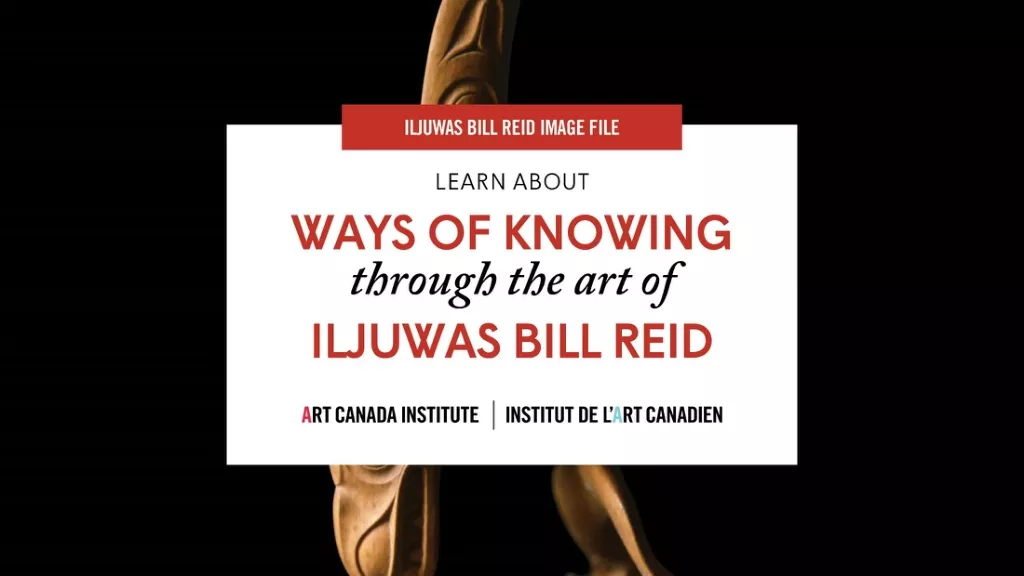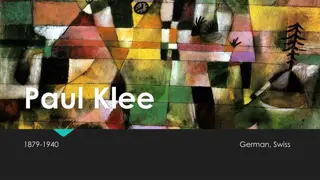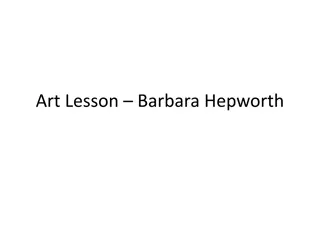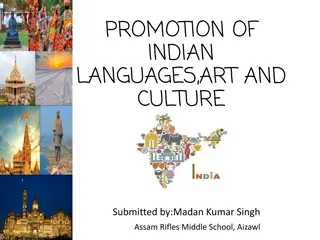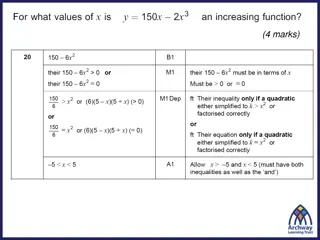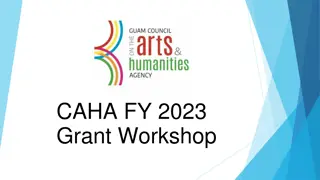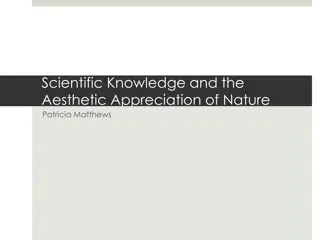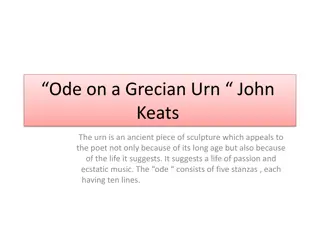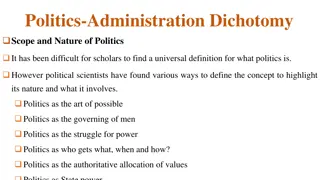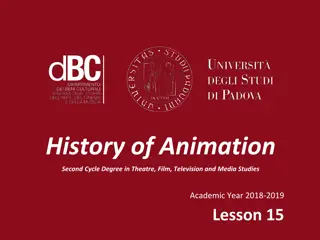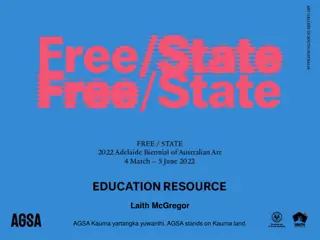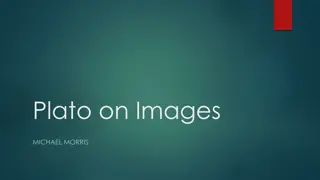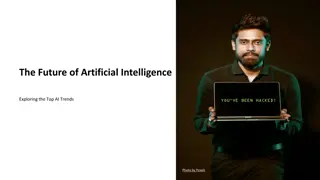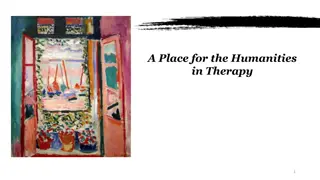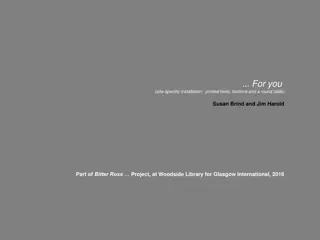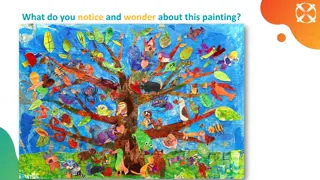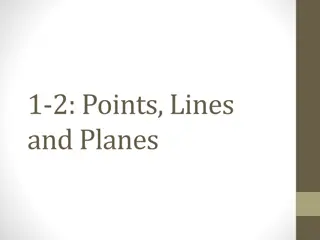Insights into Artistic Research: Definitions, Nature, and Key Points
Delve into the realm of artistic research through reflections from international seminars, definitions, and key characteristics. Explore the specific nature of this discipline, methods used, and its role in promoting arts development. Discover the critical aspects like academic rigor, enhancing knowledge through artistic practice, intuition, and subjectivity. Uncover the essence of artistic research in investigating and testing to gain knowledge within artistic disciplines.
Download Presentation

Please find below an Image/Link to download the presentation.
The content on the website is provided AS IS for your information and personal use only. It may not be sold, licensed, or shared on other websites without obtaining consent from the author. Download presentation by click this link. If you encounter any issues during the download, it is possible that the publisher has removed the file from their server.
E N D
Presentation Transcript
ARTISTIC RESEARCH A REFLECTION SHAHANUM MD.SHAH, PHD INTERNATIONAL SEMINAR FOR POSTGRADUATE PROGRAM IINSTITUT SENI INDONESIA SURAKARTA 16 NOVEMBER 2016
Research on art Research in art Research through art
SOME DEFINITIONS Artistic research is to investigate and test with the purpose of gaining knowledge within and for our artistic disciplines. It is based on practices, methods and criticality University of Dance and Circus, Stockholm Artistic Research covers the artistic processes that lead to a public artistic product. This may include an explicit reflection on the development and presentation of the artistic product Department of Music, NTNU
SOME DEFINITIONS Artistic research may be defined as a research discipline that serves the purpose of promoting the development of the arts, and which displays all, or most, of the following characteristics: Possesses a solid basis embedded in artistic practice Contributes new knowledge and/or creates new perspectives within the art Supported by critical reflection on content and/or context Articulates and reflects on methods and work processes Promotes critical dialogue within the profession, and with other relevant professions. AEC on Artistic Research
SOME KEY POINTS Academic rigour associating the value of art with that of knowledge Artistic practice Enhance knowledge and understanding with presentation of the arts Intuition Qualitative research Subjectivity Knowledge, experiences, insights Etc
QUESTIONS What kind of research then is artistic research? What does it consist of? What methods are used? When is research artistic?
QUESTIONS Wherein lies the specific nature of artistic research? In the research object? the uniqueness of artistic practice, of the work of art, of the creative process? In the research process in the course it follows, the working procedures, the methods? Or, does artistic research seek to reveal a special form of knowledge tacit, practical, sensory knowledge, as embodied in artistic products and processes? (Bordoff?)
SIMILAR TO SCIENTIFIC RESEARCH? What is research in academia? Questions - methods - the research process and the research outcomes be documented and disseminated. Does artistic research satisfy these criteria? Artistic research as a rule does not start off with clearly defined research questions, topics or hypotheses whose relevance to the research context or to art practice has been established beforehand.
SIMILAR TO SCIENTIFIC RESEARCH? The researchers are intertwined with what they are exploring much artistic research actually serves their own artistic development they do not have ample distance to the research topic, a distance that is supposedly an essential condition for achieving a degree of objectivity.
SIMILAR TO SCIENTIFIC RESEARCH? Method systematic and reliable working procedures artistic research also seems to diverge from the prescriptions set out in methodology manuals.
But does this really differ from scientific research? According to Robbert Dijkgraaf, I would say that scientific research is about doing unpredictable things, implying intuition and some measure of randomness.... Our research is more like an exploration than following a firm path (Balkema/Slager 2007: 31). The idea that the context of discovery is more distinct from the context of justification than was claimed by classical philosophy of science up to and including Karl Popper has been substantiated by Thomas Kuhn, Paul Feyerabend and historians of science that succeeded them. In this light, artistic research may have more in common with scientific research than is often presumed.
SOME POINTS TO CONSIDER 1. When artistic research is intended to refer to research typically conducted in context of artistic production, this does not imply that every type of research conducted in a conservatoire is necessarily artistic research. 2. Artistic research should fulfil the procedural standards that apply across all other research disciplines questions, justification of claims by reference to evidence, replicability, verifiability. 3. Different from other types of research in terms of the emphasis placed on the integral role of the artist in its research process.
SOME POINTS TO CONSIDER 4. Collaboration between artists and researches. 5. Communication of research results. 6. Dissemination of research results.
SOME POINTS TO CONSIDER 7. Artistic activities with the aim to produce knowledge and experience, insights, experiences and understanding is gained through the artistic process and product. 8. Practice of the art is essential to artistic research. 9. Artistic research seeks to convey and communicate content that is endorsed in artistic products. 10. Four dimensions of the artistic research subjects, method, context and outcome.
CONCLUSION Artistic researchers have at least three intertwined jobs ahead of them. 1. They need to develop and perfect their own artistic craft, creativity and conceptual thinking by doing art and thinking (conceptualizing) art, that is, developing a personal vocabulary for speaking about art and its world. 2. They have to contribute to academia and return something to their academic colleagues by proposing an argument in the form of a thesis, thus assisting in constructing the not yet very strong academic communities around artistic research. 3. They must communicate with practising artists and the larger public, performing what we could call audience education.
SOME REFERENCE MATERIALS AEC on Artistic Research SHARE Handbook for Artistic Research Borgdoff, H. (2011). Artistic research within the fields of science. Hannula, M., Suoranta, J. & Vaden, T. (2005). Artistic Research Theories, Methods and Practices. Academy of Fine Arts, Helsinki and University of Gothernburg, Sweden.
EXAMPLE OF ARTISTIC RESEARCH Deleuzabe iVariations [On Beethoven s Diabe i Variations op. 120] This artistic project involves Beethoven s Diabe iVariations op. 120 (1821 1824). Inspired by readings of the philosophy of Gi es Deleuze, Wi iam Kinderman s book Beethoven s Diabe iVariations (1987) and Michel Butor s Dialogue avec 33 variations de Ludwig van Beethoven sur une valse de Diabelli (1971), it aims to expose Beethoven s original piece to several musical encounters , le ing other times and styles interfere with Beethoven, and making unconnected connections happen. In the timeframe of the original piece, and preserving the original sequence of the Variations, diverse techniques of elimination, suppression, substitution and replacement are used. A new score is written for every performance, including interruptions and interventions from others times and styles, not only including Bach, Handel, Haydn, Mozart and Cramer (which are implicit in Beethoven s original) but also Brahms, Webern, Berg, Feldman and others. This complex articulation of (unexpected) encounters allows for the emergence of new relations between its constitutive parts, thus contributing to a permanent non-closure of artistic things and objects.







